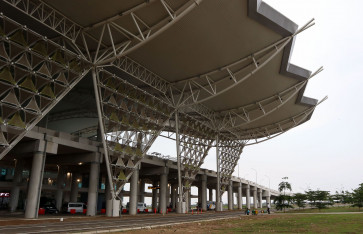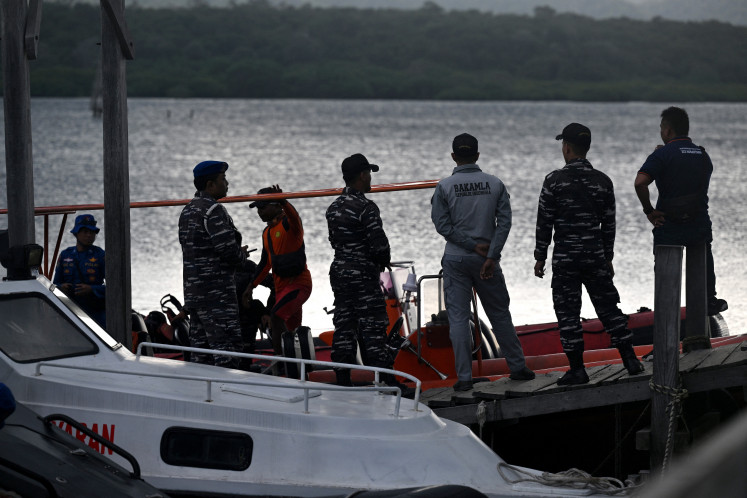Popular Reads
Top Results
Can't find what you're looking for?
View all search resultsPopular Reads
Top Results
Can't find what you're looking for?
View all search resultsNCICD doing more harm than good, scientists claim
The long-planned giant sea wall, also called the National Capital Integrated Coastal Development (NCICD), has been criticized by many parties, including a number of scientists at the Indonesian Science Institute (LIPI), who recently said the project did not qualify as development as they understood it, as it would have a negative impact both on the environment and local fishing communities
Change text size
Gift Premium Articles
to Anyone
T
he long-planned giant sea wall, also called the National Capital Integrated Coastal Development (NCICD), has been criticized by many parties, including a number of scientists at the Indonesian Science Institute (LIPI), who recently said the project did not qualify as development as they understood it, as it would have a negative impact both on the environment and local fishing communities.
The project will, for example, entail the eviction of fishermen living on the shores of Jakarta Bay, as well as hitting their livelihoods, as the project will cause fish to leave the area, Henny Warsilah, a researcher at the social and cultural division of LIPI, said in a recent discussion.
According to Henny, even if the city administration relocates the fishermen to low-cost rental apartments, as it has with evictees in other parts of the capital, the fishermen’s culture, heritage and traditions will be lost.
“Development cannot be allowed to exclude people from their culture,” she said, adding that the government should have spent years conducting research on the social impacts of the project before deciding to begin construction.
The NCICD project, which aims to prevent sea water from inundating the North Jakarta area, will comprise three phases: The first phase includes the construction of the 600-kilometer inner wall, which is targeted for completion by 2017, while the second and the third phase include the construction of two outer walls in the western and eastern parts of the bay; both are to be completed by 2025.
The project, which is expected to cost around Rp 400 trillion (US$29,4 billion), will use state and city funds, while the private sectors is contributing with the creation of 17 man-made islets between the inner and the western outer walls. According to the NCICD plan, the 17 reclaimed islets are not part of the NCICD and their construction will, therefore, have nothing to do with preventing floods, the professed aim of the NCICD.
The construction of the first phase of the NCICD project has yet to begin, but construction has begun on at least four of the 17 man-made islets, although the government recently ordered this to be halted pending the resolution of a corruption case embroiling the developers of the islets.
Fishermen in Jakarta Bay have frequently complained of decreasing catches, claiming that construction on the four islets had stirred up mud, killing fish or forcing them to leave the area.
The government’s plan to build the giant sea wall is justified under its calculation that with land in North Jakarta subsiding at a rate of around 26 centimeters a year, the municipality is predicted to be lying further below sea level in the next 10 to 15 years, according to the Public Works and Public Housing Ministry.
Currently, 40 percent of Jakarta’s land is below sea level.
“But the government has to get its data straight,” said another LIPI researcher, Jan Sopaheluwakan, who is also president of the Indonesian International Institute for Urban Resilience (I3URI).
Jan said subsidence was not occurring at a uniform pace in all areas. One particular area may be subsiding at a particular rate in one period, he said, but could remain stable in another period when land in another area is subsiding rapidly.
He further suggested that the administration deal with different parts of the city according to their respective natural characteristics.
“There should be more water in North Jakarta because that’s the nature of the area. Meanwhile, the administration should make South Jakarta a water catchment area because it is a naturally green area,” he explained.










